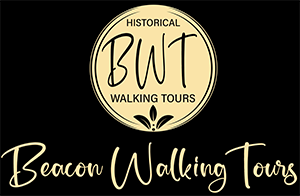“The DUMMY Light”?
DON’T SCARE THE HORSES!
The steam engine that ran the first trolly car was enclosed in a “box” that matched the design of the passenger cars trailing behind. The reason was the horses were terrified of the engine so they tried to trick the horses by covering the engine with a “dummy” car. Of course, it was soon discovered that the horses were actually afraid of the loud noise the engine made, but the name “Dummy Trolly” stuck. It’s highly likely that the dummy light used for the system that had to make a right hand turn to continue on to the Mt. Beacon Incline or to go straight on the path to Fishkill on the corner of Main and East Main was called “The Dummy Light” due to this historical tidbit. The article below explains how this all began in the City of Beacon.
Article from The Buffalo Commerial Newspaper — 18 Sep 1850 Wed. Page 2
THE DUMMY LOCOMOTIVE —- The New York Herald gives a description of the trial trip of the Dummy Locomotive on the Hudson River Railroad:
“It was rather a curious sight to see a train of cars borne along at the rate of six miles an hour, without any apparent propelling power. People started in astonishment. There was no chimney, no smoke, no engine to be seen. There was only a square box, somewhat like a baggage car, in which the locomotive was covered up from view, and the noise, at the same time, so materially lessened, as scarcely to exceed that of horses. Coke is used for heating the boiler instead of coal, and the smoke is consumed in the engine itself. Instead of a smoke pipe the flues of the tubes of the upright boiler answer that purpose.
There is a very ingenious mechanical contrivance for equalizing the injection — namely a spring — and the steam, instead of being let off and easted, is thrown into a condenser, and there converted into water, so that there is no appearance of steam about the whole concern. This engine is borne on twelve wheels, six on each side, and in the construction of the wheels there is a peculiarity which enables the locomotive to pass rapidly over the curves. They are all made on pivots so as to adapt themselves to the very short curves over which the train has to pass between Chambers street and the depot. The inventor is Mr. Waterman foreman of the Matteawan works, and the Hudson River Railroad Company have purchased it of him, the Directors being truly satisfied of its answering the purpose. The Common Council permitted it to be used for two weeks, as an experiment. Those two weeks have now expired, and it is expected permission will be given to run it permanently.
ORIGINAL NEWSPAPER ARTICLE CLIP BELOW



